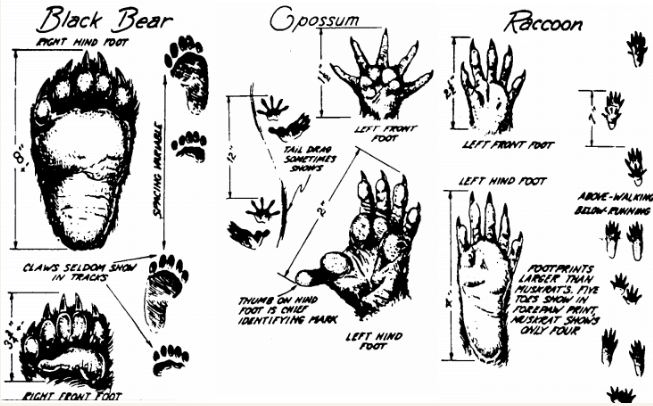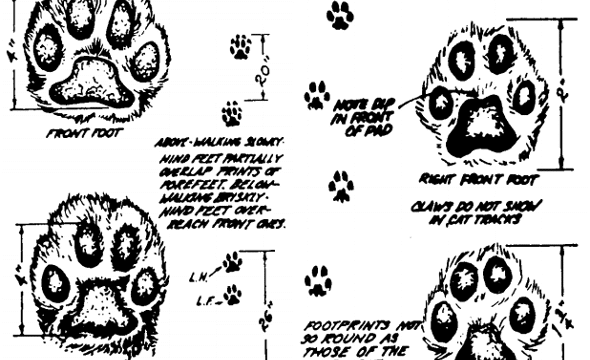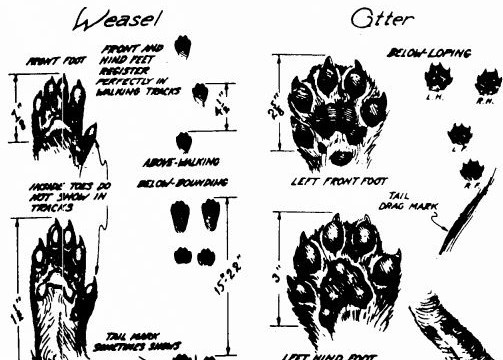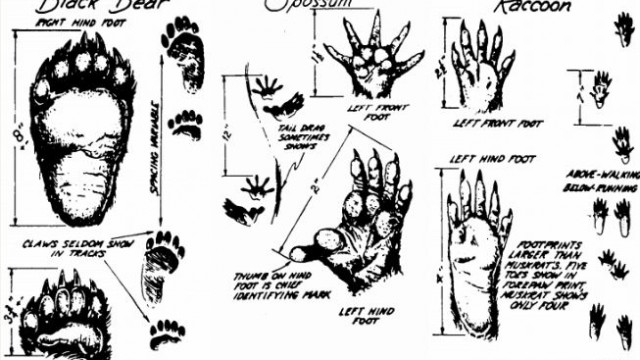Tracking animals is about far more than just following a trail. If you know what you’re doing, you can learn everything there is to know about the animal or person you’re following. Start your tracker training with the tips below.
Learning how to track and identify the footprints of animals is an ancient and largely forgotten art — one that’s not only important for hunters, but also enhances any outdoorsman’s experience in the wild. Learning how to read tracks allows you to pick up on the little dramas enacted by wildlife that usually go unnoticed by the human eye. It’s thus a skill that both deepens your understanding of nature and heightens your all-important powers of observation.
Where to Look for Tracks
Winter is primetime for animal tracking, as the prints are easy to find in the snow and can be followed for a long distance.
The drawback of snow tracking is that in deep, soft snow you may find only the holes made by the animal’s feet and legs. Further accumulation and melting can also easily obscure the trail. And of course, some animals don’t come out at all during the winter because they are hibernating.
For these reasons, mud and fine, wet sand can be an even better medium, as they hold the shape of the footprint well. A mudbank stream is one of the best places to look for tracks, as it’s frequented by shore birds and waterfowl as well as animals like the raccoon and muskrat looking for food. After a rain, sand bars, ditches, and muddy gullies are also fruitful places to find the tracks of deer, possums, and other creatures. Looking over a dewy, open field in the morning can reveal the tracks creatures made in the night as well.
Learning the Tracks
In learning which tracks belong to which animals, it can help to know the basic classifications of common animal families. Simply by counting the number of toes in a footprint, you can figure out which family the creature belongs to, and from there work on narrowing down which species you’re looking at.
Cats
via Art of Manliness
Cats leave rounded prints that show four soft, pliable, spread toes. The prints lack claws, since they’re retractable. A cat also walks in what’s called a “single register” — its hind legs exactly track its front legs, so that it appears to only be walking with two legs, rather than four. This aids in quiet, stealthy stalking.
Canines
via Art of Manliness
Canines have four toes like cats, but their feet are harder and their claws can be seen as they don’t retract. While the fox walks in a single register, dogs and coyotes walk in an indirect register — their hind legs land a little behind and to the side of the front print, leaving a messier track than that of a cat.
Weasels
via Art of Manliness
Members of the weasel family have five toes on both their front and hind feet, though all five don’t always show in the track.
Five-Fingered Outliers
via Art of Manliness
While bears, possums, and beavers don’t belong to the weasel family, their tracks are similar in that they also have five toes in both back and front. However, they differ in the flat, human-like nature of their feet.
Rodents
Rodents have four toes on their front feet, and five toes on their hind feet.
Hares & Rabbits
Rabbits have four toes on both their front and rear feet, and in almost all species the back feet leave tracks that are at least twice the size of the front.
Hoofed Animals
The tracks of hoofed animals are easy to recognize, and deer tracks are some of the most common to find in the woods. You can distinguish a doe from a buck, in that the female has sharper hoofs and a narrower foot than the male.
Tips for Following the Trail
When following an animal’s footprints, try to track towards the sun if possible, as the shadows will make the impressions stand out more. The sun’s position in the sky during the early morning and late afternoon will particularly enhance the tracks.
As you follow an animal’s tracks, don’t just focus on the discrete sets of prints themselves, but continually take in the trail as a whole — which may in fact be easier than finding individual footprints. For example, by looking ahead, instead of having your nose to the ground, you may see a trail of bent grass through a field. Also look for other disturbances like cracked twigs, or pebbles and leaves that have been overturned to reveal their darker, wetter undersides. If you lose the trail, place a stick by the last set of prints you discovered and then walk around it in an ever widening spiral until you pick up the trail again.
Looking for tracks, the most important thing you’re following is not necessarily that little picture-perfect track in the mud or snow, as you’ll almost never find a perfect track; what you’re following is anything that looks out of place: an overturned leaf, a wet rock, broken twigs.
By stepping back and looking at the big picture, you can follow a trail much more easily than if you simply allowed your eyes to skip from one track to the next. Try this out on your next trail adventure!
Old skills like this are always and will always be some of the most valuable skills you can ever learn for survival. Check out the rest of this great article at Art of Manliness.
Featured Image via Art of Manliness




It takes a lot of practice to get good at tracking, but it’s a valuable thing to know, especially for those who spend a lot of time outdoors.
Where is the “HildaBeast?”